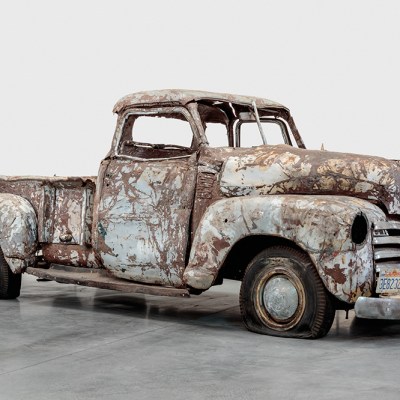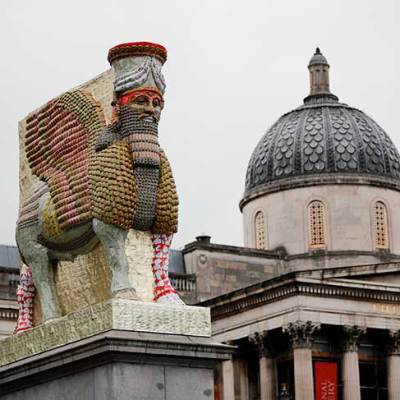Francis Alÿs
Francis Alÿs’s projects spanning installation, video, painting, and drawing pursue anthropological and geopolitical concerns by sending up the rituals of everyday life. The Nature of the Game, the artist’s presentation for Belgium’s pavilion at the Venice Biennale, demonstrated the disruptive, often transformative, quality of games in short films and small-scale paintings depicting scenes from Kabul to Jerusalem and Shanghai. A major exhibition, currently at Copenhagen Contemporary, also explores notions of play, while a survey at the Musée cantonal des Beaux-Arts in Lausanne focused on Alÿs’s dedication to the act of walking as a way of reimagining the world.
Francis Alÿs. Photo: Louise Stigsgaard; courtesy the artist and David Zwirner

Anselm Kiefer
Over the past four decades, Anselm Kiefer has challenged the limits of painting by incorporating many different kinds media into his work, from lead and concrete to dirt, dried plants and found objects such as books and scythes. He was commissioned by the Fondazione Musei Civici in Venice to respond to the art and architecture of the Doge’s Palace and his cycle of monumental paintings were presented in the majestic surroundings of the Sala dello Scrutinio in March. In May, the artist’s vast studio complex in the south of the France also opened to the public for the first time.
Anselm Kiefer. Photo: Peter Rigaud; courtesy Shotview Syndication

Simone Leigh
Whether it be in the form of monumental sculptures, performances or films, Simone Leigh’s work foregrounds the experiences of Black women and their histories. She describes her approach to making art as ‘auto-ethnographic’ and employs materials, forms and traditions from Nigeria, Namibia and South Africa. Leigh won the Golden Lion at this year’s Venice Biennale for Brick House – a five-metre-high bronze bust of a Black woman with a clay house for a skirt – which opened the main exhibition in the Arsenale. She was also the first Black woman to represent the United States in its national pavilion.
Simone Leigh. Photo: Shaniqwa Jarvis; Artworks: courtesy the artist and Matthew Marks Gallery; © Simone Leigh

Hew Locke
Hew Locke’s sculptures turn symbols of state power – coats of arms, naval vessels, public statues and royal portraits – into tools for recovering lost or erased colonial histories. The Procession was installed in the Duveen Galleries at Tate Britain in March, while Gilt, his commission for the facade of the Metropolitan Museum of Art, was unveiled in September. His work is also included in ‘In the Black Fantastic’, a group exhibition that was first staged at the Hayward Gallery in London last summer before travelling to the Kunsthal Rotterdam in November.
Hew Locke in front of Gilt, the Facade Commission at the Metropolitan Museum of Art in New York. Photo: Anna-Marie Kellen; courtesy Metropolitan Museum of Art

Charles Ray
Since the early 1970s, Charles Ray has drawn on historical and contemporary developments in sculpture to make the medium his own. Many of his early works included elements of performance, while recent sculptures have taken up more traditional themes, such as the reclining nude. In January, a major exhibition at the Metropolitan Museum of Art, along with an extensive catalogue, highlighted the importance of Ray’s contribution to the medium through a presentation of works drawn from across his five-decade career. A month later, two further exhibitions opened in Paris, at the Centre Pompidou and at Bourse de Commerce – Pinault Collection.
Charles Ray photographed in a foundry in Walden, New York, in 2018. Photo: Lauren Lancester

Faith Ringgold
For six decades, the artist, author, activist and educator Faith Ringgold has acted on her belief that art can be revolutionary (even if the art world is not), challenging social hierarchies, racial prejudice and gender norms. The most comprehensive survey of the 92-year-old artist’s work to date, at the New Museum in February, ranged from Civil Rights-era paintings in the American People series to her celebrated ‘story quilts’ (including all of The French Collection cycle), which combine painting with textiles and autobiography and history with fictional narratives.
Faith Ringgold in Miami in 2011. Photo: Rabbani and Solimene Photography/Getty Images for Art Miami





